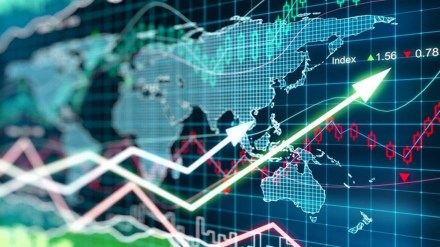The Federal Reserve raised interest rates for the seventh time in a row to combat rising prices. However, according to Chair Jerome Powell, the Federal Reserve is still not close to ending its programme of interest rate hikes to combat inflation, and borrowing costs may rise more than investors anticipate in 2019.
The Federal Open Market Committee increased its benchmark rate by 50 basis points to a target range of 4.25% to 4.5%. Policymakers are expecting rates to end next year at 5.1% before falling to 4.1% in 2024 – a higher level than originally predicted. Seven of 19 officials see benchmark rates above 5.25% next year.
In 2023-24, the focus may shift to Fed rate cuts rather than inflation figures. What this means for the markets is that there is a clear signal for stock prices to rise. However, inflation may not disappear overnight, and the Fed’s battle against it may last well into the first half of 2023, at the very least. The million-dollar question for the markets is whether the Fed will pause rate hikes and wait a few months before cutting rates, or whether rate cuts will begin immediately after a pause. That, in turn, will depend on how harsh the recession is in 2023. In case of a hard landing on the economy, Fed may have to blink earlier than expected and start cutting rates.
Also Read: What is Federal Reserve Chair Jerome Powell’s message to the market?
Here are some market experts’ perspectives on the Fed rate hike and the market outlook in 2023.
New bull market in first half of CY2023
Umesh Kumar Mehta, CIO, Samco Mutual Fund
It’s almost curtains down, probably, as this could be the last Fed rate hike. Soon, the world might enter into wait-and-watch mode before the downward interest rate journey begins. The raw material for businesses -money-, its cost i.e. interest rate, is unlikely to increase further given what the Bond market is signaling. The US 10-Year bond yield for the first time, in the elevated interest rate environment, has intersected the Fed rates and has started to decline more than the 2-Year bond yield, indicating that the cost of long-term money has started to decline. Fed too, is expected to echo by first pausing and then reducing the rates in second-half CY2023, thus, setting the stepping stone for the new bull market across the globe in the first half of CY2023.
US recession and policymakers
Manish Chowdhury – Head of Research at Stoxbox
On expected lines, the US Fed raised its benchmark interest rates by 50 bps to the highest level since December 2007. The tone of the central bank looked cautious, as they expect further rate hikes in 2023 and a slowdown in economic growth. With the expected impact of policy tightening still not visible on hiring trends and consumer sentiment, we are still not convinced that a near-terminal rate is on the horizon. We believe that it would be difficult and would take some heavy lifting by policymakers to avoid the US entering into a recession.
Expect market volatility in 2023
Dhawal Dalal, CIO-Fixed Income, Edelweiss AMC
FOMC policy decision was mildly hawkish. While 50 basis-point rate hikes were along the expected lines the median policy rate forecast suggested policy rates will be higher for 2023 or until inflation is decisively lower. That said, the bond market is still not convinced that the Fed will take the Fed Fund rate to the 5-5.25% range. To that extent, there is some divergence in views which could lead to some volatility down the road.
Also Read: Is the Santa Claus rally in US stocks cancelled this year?
2024 expected to be the year of high rates
Mohit Ralhan, CEO, TIW Capital
The 50-bps rate hike by the US Fed was along the expected lines. The inflation in the US has trended down but it is still significantly above the 2% target threshold and Fed has given enough indication that it will take the policy rates to 5%. Although the gasoline and electricity prices declined a bit in November and food inflation moderated, the housing rents still remain high. It is likely that Fed will continue to increase the rate to at least 5% or slightly above 5% before pausing and then wait for inflation to reverse to below 2%. Only then it is likely to start unravelling the rate hikes. 2024 is expected to be the year of high-interest rates and the central banks across the major economies are also likely to continue rate hikes to keep the rate differential with the US in check irrespective of their domestic inflation situation.
No rate cuts until 2024
CA Manish P. Hingar, Founder, Fintoo
In the last rate decision for 2022, the US Fed raised rates by 50 basis points to 4.50% which is in line with market expectations. This is after raising the interest rate by 75 basis points at each of the previous four meetings. The Fed projects a 5.1% fed funds rate at the end of next year, much higher than what the market expected. The Fed also forecast that it would keep rates higher through 2023, with no reductions until 2024. The Fed is definitely hawkish. Consumer prices data which were released earlier showed a slowdown in inflation which lifted hopes that central banks will stop raising rates in early 2023.
